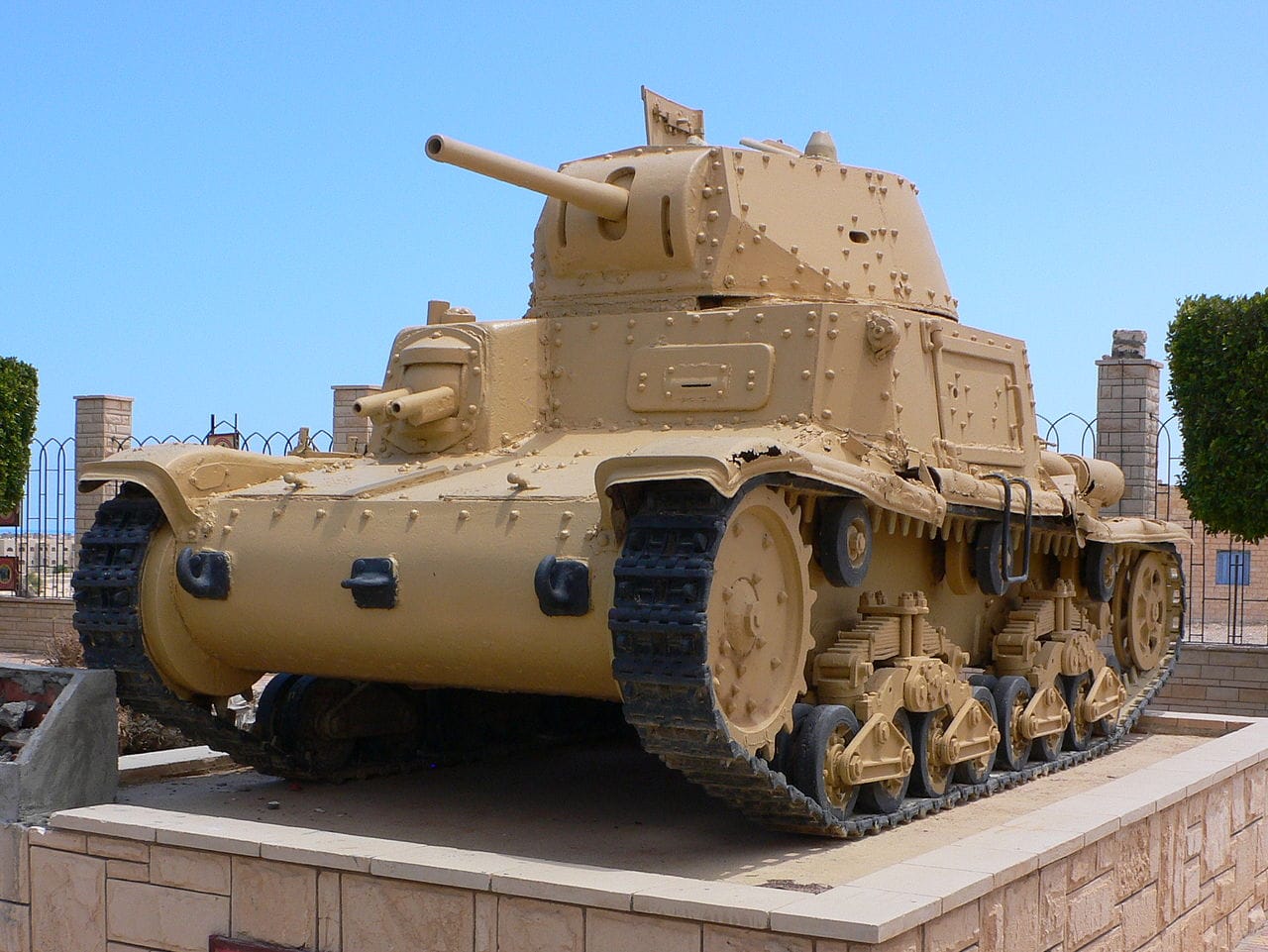Benito Mussolini’s Fascist Italy might have been the first Axis power to capitulate during the Second World War, but that does not justify the all-too-common misconception that Italian troops across the board were cowardly, weak-willed fighters.
I have said this before, but If you don’t want to take my word for it, go to YouTube and educate yourself with a highly enlightened video titled “Common Myths about the Italian Army most Casual Historians Believe.”
That soapbox rant aside, the WWII-era Italian war machine produced some pretty noteworthy pieces of hardware, from small arms such as the Beretta Model 1934 pistol to the FIAT G.55 Centauro fighter plane, and the mighty battleship Vittorio Veneto.
Then there were Italy’s tanks. Today we will look at Italy’s primary tank of WWII, the M13/40.
Carro Armato M13/40 Early History and Specifications
The Carro Armato M13/40 was first ordered by Italy’s Regio Esercito in December 1937. It entered the initial design phase in October 1939, with full-time production starting in March 1940 and official operational service beginning that July. The tank was manufactured by the now-defunct Gio. Ansaldo et Cie engineering company, headquartered in Genoa.
The M13/40 alphanumeric designation stemmed from M for Medio (medium), 13 for the originally slated tonnage, and 40 for its initial production year. It was built as a replacement for FIAT L3 tankettes and the Carro Armato Medio M11/39.
The tank’s final weight turned out to be 13.5 tons. Additional specifications included a length of 15 feet 5 inches, a width of 7 feet 2 inches, and a height of 7 feet 6.5 inches. The Fiat SPA 8T V8 diesel, 125 horsepower engine pushed the tank along at a maximum speed of 20 miles per hour on paved roads. It had an operational range of 120 miles. Primary armament was a 47mm Cannone da 47/32 M35 main gun, backed up by three to four Breda Model 38 8mm machine guns. Armor thickness ranged from 25 to 42mm. Crew capacity was four: a commander, driver, machine-gunner/radioman, and loader.
Operational Performance (in Fact and Fiction)
The M13/40 was first blooded in combat during the Albanian and Greek campaigns in late 1940, and it saw its first desert warfare usage in December of that year during Operation Compass.
A significant number of these tanks were captured intact by Commonwealth forces and pressed into the service of the British Crown. Accordingly, the tank features in the 1987 novel Easter Day 1941 by G.F. Borden. As the back cover blurb of the paperback edition states, “four Allied soldiers make their way across the North African Desert in a commandeered enemy tank.” That tank is the M13/40. Written in first-person narrative, the book’s protagonist, an American expat named Peter who’s serving as a sergeant in the British Army, says some fairly unflattering things about the Italian tank:
“[T]he M13/40 isn’t worth much. For although it has lines reminiscent of the Russian T-34/76, that faint similarity, and diesel engines, are all the two AFVs have in common. The M13/40 has a poor power to weight ratio and is slow off the road. It is also poorly gunned and mechanically unsound. It has a high silhouette, which in armored warfare means death. Its plates are held together with rivets. Rivets are unnerving: any solid shot striking the M13/40, even if it does not penetrate, may pound a rivet into a fighting compartment; and any such rivet will be moving almost as fast as the shot that struck the tank’s carapace.”
Regarding the Breda machine gun, the author/protagonist goes on to gripe, “It is annoying that the gun is not belt-fed.” (It’s a clip-fed weapon.) Yet in spite of these kvetches, Peter and his three crewmen, in the true martial spirit of “Adapt, Improvise, Overcome” manage to make the best of their M13/40 in battle.
The Tank Encyclopedia, unlike Borden, does acknowledge some positive attributes of the M13/40. Among these were relative ease of production, a “sober” diesel engine, and an efficient gun that was capable of piercing 2.16 inches of armor at 550 yards. However, the armor and armament proved inadequate against U.S. Sherman tanks during the Second Battle of El Alamein. Heavy losses were sustained, though a good number still lived to see the end of the war.
Three of these tanks even saw use at the hands of the Egyptians during the 1948 Arab-Israeli War; one of them was knocked out and captured by the Israelis. It was put on display at the Negba kibbutz as a monument to the fledgling State of Israel’s triumph against all odds.
Where Are They Now?
A total of 779 of these tanks were built. I’ve been unable to ascertain the exact number of surviving M13/40 tanks, but my research shows there are at least two that have been preserved for museumgoers. One sits at the US Army Ordnance Museum at the Aberdeen Proving Ground in Maryland, and another at the Military Museum Belgrade in Serbia.
Christian D. Orr is a Senior Defense Editor for 19FortyFive. He is a former Air Force Security Forces officer, Federal law enforcement officer, and private military contractor (with assignments worked in Iraq, the United Arab Emirates, Kosovo, Japan, Germany, and the Pentagon). Chris holds a B.A. in International Relations from the University of Southern California (USC) and an M.A. in Intelligence Studies (concentration in Terrorism Studies) from American Military University (AMU).

